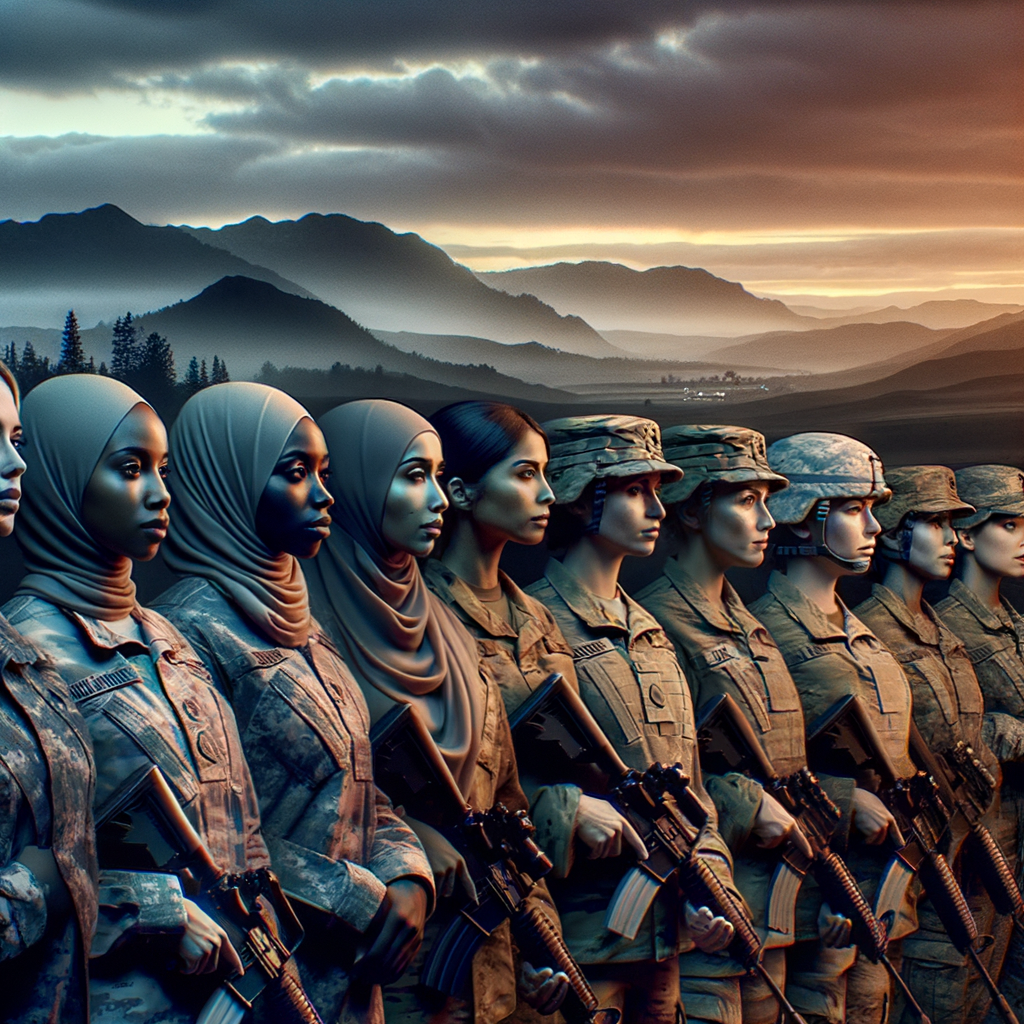Women on the Frontline: Changing Face of the Military
Over the years, the role of women in the military has undergone a significant transformation. From being confined to nursing and support roles, women have broken barriers to serve on the frontline, demonstrating their capabilities in combat roles. This article explores the evolving role of women in the military, focusing on their journey to the frontline, the challenges they face, and the impact they have made.
The Historical Role of Women in the Military
Historically, women’s roles in the military were limited to nursing or support roles. During World War I and II, women served as nurses, cooks, and clerks. However, their contribution was often overlooked, and they were rarely recognised for their service.
World War I and II
During World War I, women served in auxiliary roles, providing medical and logistical support. The Voluntary Aid Detachment (VAD) was a key organisation that enlisted women to serve as nurses, cooks, and clerks. Similarly, during World War II, women served in various auxiliary roles in the Auxiliary Territorial Service (ATS), the Women’s Auxiliary Air Force (WAAF), and the Women’s Royal Naval Service (WRNS).
Post-World War II
After World War II, the role of women in the military began to change. In 1948, the Women’s Armed Services Integration Act was passed in the United States, allowing women to serve as permanent, regular members of the military. In the UK, the Women’s Royal Army Corps was established in 1949, marking a significant step towards gender equality in the military.

The Journey to the Frontline
The journey of women to the frontline has been a long and challenging one. Despite the changes in legislation, women continued to face resistance and discrimination. However, their determination and resilience have led to significant breakthroughs.
Breaking Barriers
In the late 20th century, several countries began to lift restrictions on women serving in combat roles. In 1989, Captain Linda L. Bray became the first woman to lead US troops in combat during the invasion of Panama. In 1990, the UK’s Royal Navy became the first of the British armed forces to allow women to serve on active service at sea.
21st Century Milestones
In the 21st century, women have continued to break barriers in the military. In 2013, the US lifted its ban on women in combat roles, and in 2016, the UK followed suit. These changes have paved the way for women to serve on the frontline, demonstrating their capabilities in combat roles.
Challenges Faced by Women on the Frontline
Despite the progress made, women on the frontline continue to face numerous challenges. These include gender discrimination, sexual harassment, and the physical demands of combat roles.
Gender Discrimination
Gender discrimination remains a significant challenge for women in the military. Women often face stereotypes and biases that question their abilities and suitability for combat roles. This can lead to a lack of opportunities and recognition for their contributions.
Sexual Harassment
Sexual harassment is another major issue faced by women in the military. According to a 2018 report by the UK Ministry of Defence, 12% of female personnel reported experiencing a sexually harassing behaviour in the last 12 months. This not only affects their mental health but also undermines their ability to perform their duties effectively.
Physical Demands
The physical demands of combat roles can also pose challenges for women. While many women meet and exceed the physical standards required, the perception that women are physically weaker than men can lead to discrimination and bias.
The Impact of Women on the Frontline
Despite the challenges, women on the frontline have made a significant impact. They have demonstrated their capabilities in combat roles, contributed to mission success, and paved the way for future generations of women in the military.
Contributions to Mission Success
Women on the frontline have proven their worth in combat roles. They have demonstrated their skills and abilities, contributing to mission success. For example, Major Nicola Goddard of the Canadian Forces was the first woman in the Canadian military to command an artillery unit in a combat zone. Her leadership and tactical skills were instrumental in the success of her unit’s mission in Afghanistan.
Role Models for Future Generations
Women on the frontline serve as role models for future generations of women in the military. Their courage, determination, and resilience inspire other women to pursue careers in the military and challenge gender norms.
Conclusion
The journey of women to the frontline has been a long and challenging one, marked by resistance, discrimination, and numerous obstacles. However, their determination and resilience have led to significant breakthroughs, changing the face of the military. Despite the challenges they face, women on the frontline have demonstrated their capabilities in combat roles, contributed to mission success, and served as role models for future generations. Their journey is a testament to the power of perseverance and the pursuit of equality, reminding us that gender should not be a barrier to serving one’s country.




